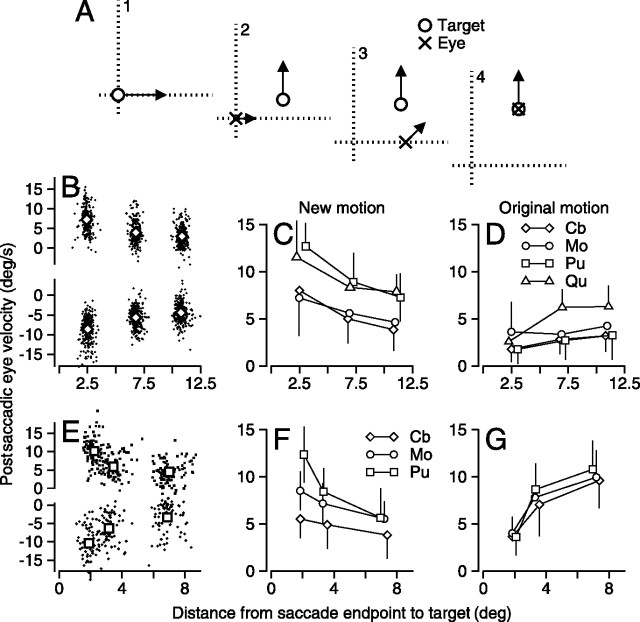Figure 2.
Relationship between postsaccadic eye velocity and the distance from the endpoint of the saccade to the target position when the direction of new motion was orthogonal to the original motion. A, Same schematic as Figure 1. B–D, Analysis of data when target displacement was orthogonal to the original motion, as shown schematically in A. E–G, Analysis of data when target displacement was parallel to the original motion. B, E, Plots of postsaccadic eye velocity in the direction of new motion as a function of the distance between target and eye at the end of the saccade for individual monkeys. Dots show data for individual trials, and larger symbols (diamonds in B for monkey Cb and squares in E for monkey Pu) show means for the three different amplitudes of displacement of target position. Positive and negative values of postsaccadic eye velocity were taken from trials in which the new target motion was upward or downward. C, F, Means and SDs of postsaccadic eye velocity in the direction of new motion for all monkeys used in each experiment. Different symbols correspond to different monkeys. E, G, The mean and SD of postsaccadic eye velocity in the direction of the original motion. The graphs in C and D summarize data for experiments in which the original direction of motion was horizontal and new motion vertical, whereas in F and G, original motion was vertical and new motion was horizontal. Before averaging, we took the absolute velocity of all eye velocities.

